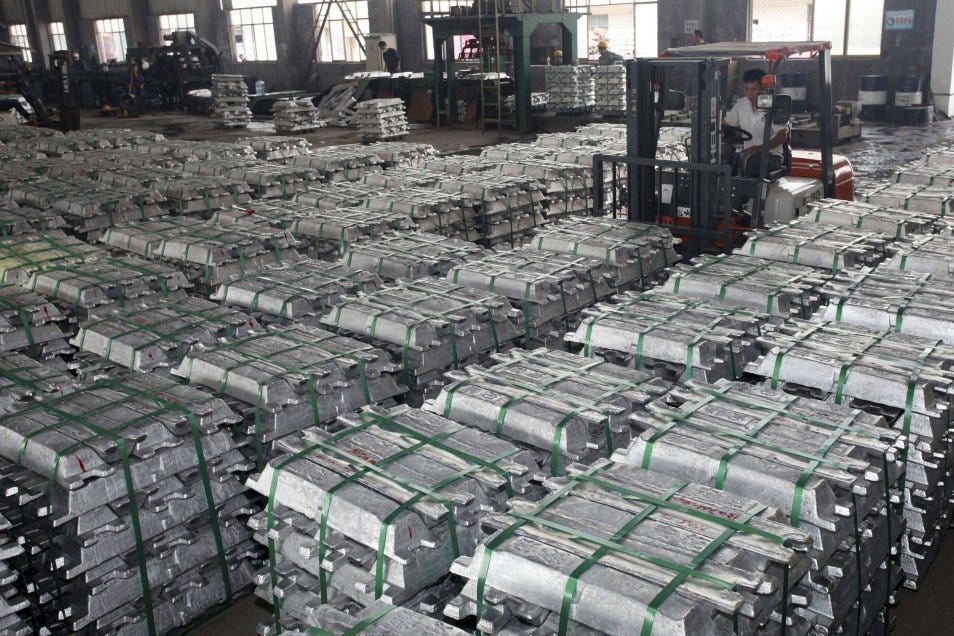Asia
China Overproduction Surge Gives Global South Pneumonia
Last month, shortly before her 15-year rule came to an abrupt if bloody end, Bangladesh Prime Minister Sheikh Hasina made a trip to Beijing, meeting with Chinese leader Xi Jinping and signing various cooperation agreements. But she cut her visit short, apparently, according to some sources, because she was dissatisfied with the financial aid Beijing was willing to offer.
The visit was supposed to have reflected the fact that China is the country’s largest trade partner. However, what has gone largely unnoticed among all the words written about China as partner and source of capital for the nations of the so-called Global South is that the China-Bangladesh trade relationship has been about the most unbalanced on the plant. The most recent data show China’s exports of US$26 billion as 27 times its imports from Bangladesh.
Most of Bangladesh’s exports – mainly textiles and garments – go to the west, to the European Union, the United Kingdom, the United States, etc. Meanwhile, its large overall merchandise trade gap is primarily filled with remittances of US$30 billion from Bangladeshi workers in Saudi Arabia and the Gulf States, and families settled in countries such as the US, UK, Canada, and Malaysia.
The bottom line is that China is extracting huge income gains from Bangladesh largely reliant on distant sources for its trade revenues. Now, however, it is not just Bangladesh which has reason to complain about China’s predatory trade behavior – which is not deliberate but which follows on from the imbalance in China’s economy between a lack of domestic demand and massive oversupply of productive capacity across a range of industries. Most of the attention has been given to a surge in anti-dumping and other restrictive measures introduced by western countries including focused on new industries such as solar panels and electric vehicles. But many Global South countries are now reacting against the surge in cheap Chinese exports made cheap not so much by lower production costs but by China’s excess domestic supply and a need to raise cash. Large upper-middle-income countries such as Mexico and Turkey are also taking defensive action.
So far this year, China’s exports to the Association of Southeastern Asian Nations have grown by 12 percent compared with an overall export rise of 7 percent – and the neighbors are getting restive. Commodity exporters such as Malaysia and Indonesia may not have significant trade imbalances with China, but they do fear for their domestic manufacturing and any threats to employment and corporate health. Indonesia has announced tariffs of up to 200 percent on some items, not necessarily from China but most probably. Malaysia too is looking to anti-dumping measures. Vietnam has already imposed anti-dumping duties on certain steel products from China and India is likely to do the same. All this is despite the freer trade supposed to come with various economic partnership arrangements.
To make matters worse, the surge in Chinese exports is occurring at a time when China’s import demand is quite slack and likely to remain so, at least for raw materials given the likely prolonged slump in construction due to over-supply of housing and some infrastructure.
Quite how bad things can get for industries elsewhere is illustrated in Latin America where China has grabbed a large share of the steel market. Just this month Chile’s major steel plant, Huachipato, announced that it was closing production as it is unable to compete despite the fact that protective tariffs between 25 percent and 34 percent had been imposed on Chinese products in April following a previous closure of the Huachipato plant.
The Chilean government is anxious not to upset China, which is the major buyer of its copper, of which Chile is the world’s largest producer. But fear of retaliation may be exaggerated. Copper is a globally traded and priced commodity so any change in China’s sourcing would likely be balanced by other buyers. Chile anyway has to suffer the reality that China mainly imports Chilean copper ore and concentrates and exports metal, thus depriving Chile of the value-added in refining its own ore.
That is indeed rather typical of the problems that many exporters of metals face – the difficulty of making local refining profitable in the face of the scale of investment in refining in China. In different ways, the sustained slowdown in China’s economy, together with over-investment in capacity are changing the way that trade partners view what was once a great opportunity.







